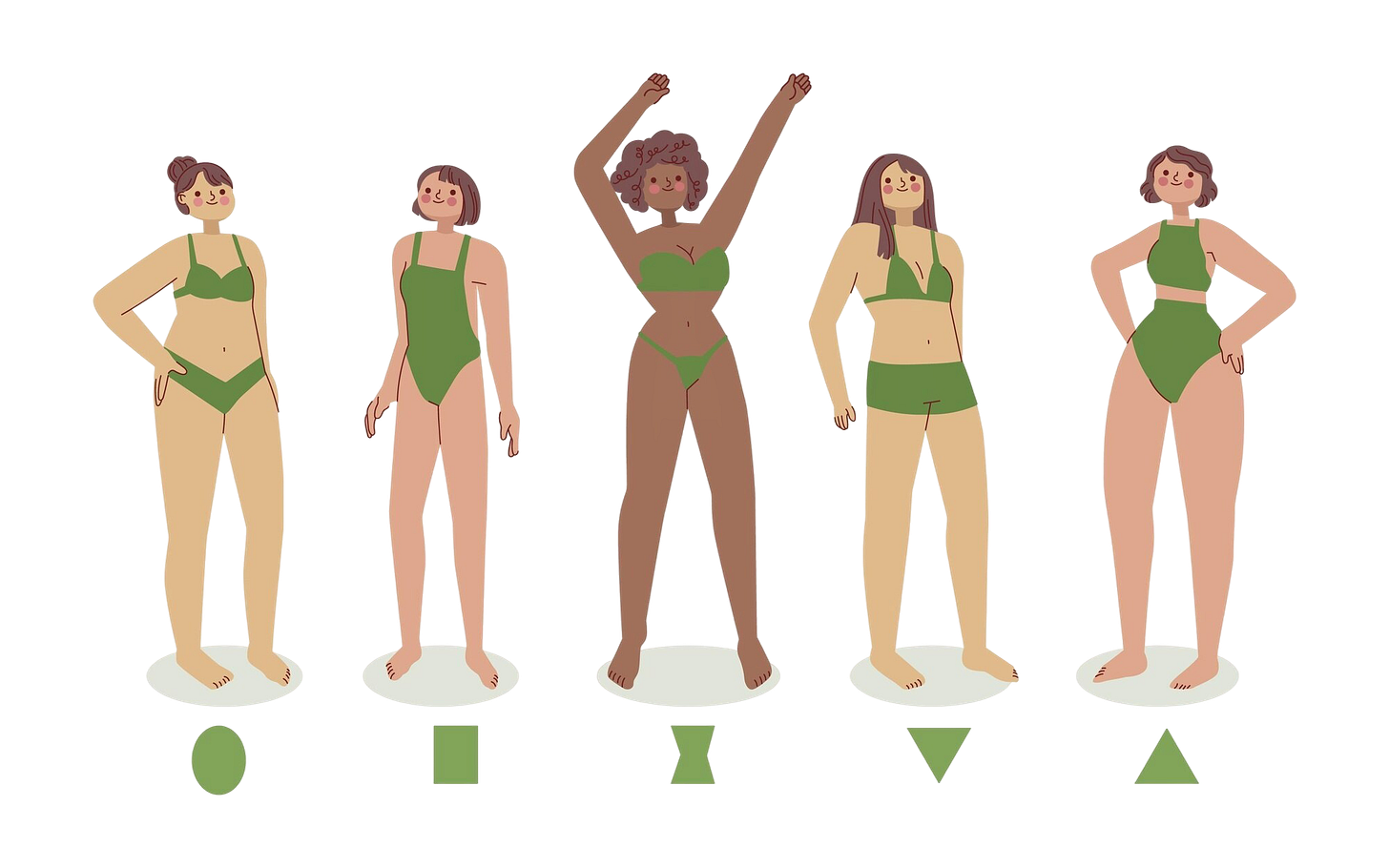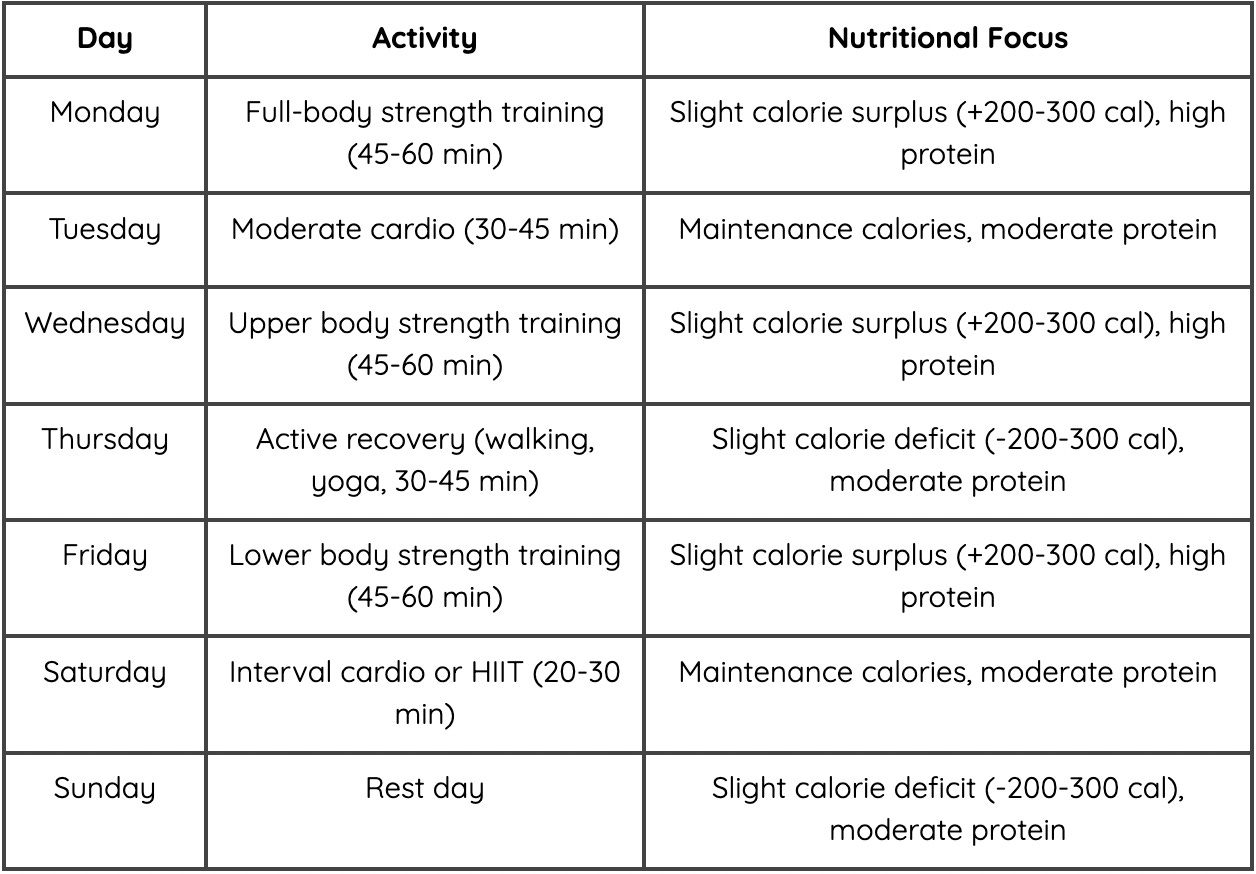Beyond the Scale: Why Fat Loss Trumps Weight Loss in Your Fitness Journey
Lose Fat, Gain Muscle, and Ignore the Scale
Every morning, millions of people step onto their bathroom scales, anxiously awaiting the verdict. Numbers flash, hopes rise or fall, and entire days are colored by this single measurement. But what if this ritual—this fixation on weight—is actually steering us in the wrong direction?
Welcome back to NutriNom's weight loss series! Today, we're exploring a concept that might fundamentally change your approach to fitness: body recomposition—the art and science of losing fat while simultaneously gaining muscle.
The Scale's Great Deception
A friend once told me, "I've been exercising six days a week and watching everything I eat for three months, but the scale hasn't budged!"
After reviewing her program and taking measurements, the truth emerged: she had lost four inches from her waist and gained noticeable muscle definition in her arms and legs. Her clothes fit better, her energy had improved, and there had been noted improvements in her blood work—yet because the number on the scale remained unchanged, she considered herself a failure.
She had experienced successful body recomposition without realizing it. She had been losing fat while gaining muscle, transforming her body composition even as her weight remained stable.
This scenario illustrates a fundamental truth: weight loss and fat loss are distinctly different processes with different health implications.
Understanding What Weight Really Represents
When your scale shows a decrease in weight, that loss could come from:
Fat (what most of us want to lose)
Muscle (what we want to preserve or gain)
Water (which fluctuates continuously)
Glycogen stores
Even the contents of your digestive system
A typical scale is blind to these distinctions. It simply measures the force gravity exerts on your body—nothing more. It can't tell you if you've lost inflammation-promoting fat tissue or metabolism-boosting muscle.
This is why a bodybuilder with exceptionally low body fat might register as "overweight" on a BMI chart, while someone with a "normal" weight might actually have unhealthy levels of internal fat surrounding their organs.
The Case for Prioritizing Fat Loss
Losing weight without regard to what you're losing can be counterproductive for several reasons:
Research published in Reviews in Endocrine and Metabolic Disorders shows that maintaining muscle while losing fat provides remarkable benefits:
Metabolic Protection: Muscle tissue regulates blood sugar and improves insulin sensitivity, protecting against diabetes.
Cardiovascular Defense: A higher muscle-to-fat ratio correlates with healthier blood lipid profiles.
Functional Independence: Adequate muscle mass prevents frailty and loss of independence, especially as we age.
Metabolic Advantage: Muscle burns more calories at rest than fat does, making weight maintenance easier after weight loss.
Inflammatory Balance: Muscle tissue has anti-inflammatory properties, while excess fat promotes chronic inflammation linked to numerous diseases.
The evidence is clear: your body composition—the ratio of fat to muscle—matters far more than your weight when it comes to health outcomes.
Body Recomposition: The Ultimate Goal
Body recomposition refers to the process of simultaneously reducing body fat while building or maintaining muscle mass. It represents a more sophisticated approach to body transformation than simply losing weight.
But is it really possible to lose fat and gain muscle at the same time? The scientific literature says yes, particularly for:
Beginners to strength training
Those returning to exercise after a break
Individuals with higher starting levels of body fat
People who haven't previously consumed adequate protein
A systematic review published in the Journal of Exercise Nutrition & Biochemistry found that both experienced and novice trainees can achieve body recomposition under the right conditions.
The Two Essential Pillars for Success
Research consistently points to two critical factors that drive successful body recomposition:
Pillar 1: Resistance Training – Telling Your Body to Keep Its Muscle
Resistance training sends powerful signals to your body to preserve and build muscle tissue, even during periods of calorie restriction. Without this stimulus, your body has little incentive to maintain muscle when energy is limited.
Studies recommend a minimum of two days of resistance training per week for body recomposition, though 3-4 sessions may be optimal for most people.
Effective strength training can happen anywhere:
Gym-Based Strength Exercises:
Barbell squats
Deadlifts
Bench press
Lat pulldowns
Leg press
Seated rows
Home-Based Strength Exercises:
Bodyweight squats
Push-ups (against wall, countertop, or floor depending on ability)
Chair dips using a sturdy dining chair
Soup can bicep curls (1-2 pound cans work well for beginners)
Gallon jug rows (a gallon of water weighs about 8 pounds)
Laundry detergent deadlifts
Stair climbs
Couch step-ups
Backpack squats (wear a backpack with books for added resistance)
For home workouts, aim for 2-3 sets of 10-15 repetitions of each exercise with minimal rest between sets to maximize the metabolic effect.
Pillar 2: Protein – The Building Blocks Your Body Needs
Adequate protein intake provides the amino acids necessary for muscle repair and growth. Without sufficient protein, even the best training program will yield limited results.
Research shows that higher protein intake than typically recommended (0.8g/kg) is beneficial during body recomposition. A range of 1.6-2.2g/kg body weight has been shown to optimize muscle preservation during fat loss.
For practical purposes, here's a simple calculation:
For women: 100g protein + 5g for every inch over 5 feet tall Example: A 5'4" woman would need approximately 120g protein daily
For men: 106g protein + 6g for every inch over 5 feet tall Example: A 5'10" man would need approximately 166g protein daily
Quality protein sources include:
Lean meats (chicken breast, turkey, lean beef)
Fish and seafood
Eggs
Dairy products (Greek yogurt, cottage cheese)
Plant proteins (lentils, beans, tofu, tempeh)
Protein supplements when whole food sources aren't convenient
Distributing protein intake evenly throughout the day (25-30g per meal) appears more effective than consuming most protein in a single meal.
Your Weekly Body Recomposition Blueprint
The following plan strategically balances strength training, cardio, and recovery, while providing nutritional guidance for each day:
This approach creates "calorie cycling"—strategic variation in calorie intake based on activity level. On strength training days, you provide extra energy and building blocks for muscle recovery. On rest or cardio days, you create a small deficit to promote fat loss.
Measuring True Progress
If weight alone doesn't reliably track body recomposition progress, what should you monitor instead?
Body composition measurements: A body fat scale or body fat calipers can provide more useful data than weight alone by measuring your fat percentage and lean mass percentage.
Tape measurements: Regular measurements of key body areas (waist, hips, thighs, arms) can reveal changes in body composition even when weight remains stable.
Progress photos: Monthly photos taken under the same conditions can show visual changes that scales miss.
Performance metrics: Increasing the weight you can lift or the number of repetitions you can perform provides concrete evidence of improved body composition.
Clothing fit: Often the most satisfying indicator—how your clothes fit can reveal body composition changes independent of weight.
Avoiding Common Pitfalls
To maximize your body recomposition success:
Don't create extreme calorie deficits. Very low-calorie diets accelerate muscle loss. Moderate deficits (300-500 calories below maintenance) work better long-term.
Don't neglect strength training. Cardio alone won't effectively preserve muscle mass during fat loss.
Don't under-consume protein. Even with perfect training, inadequate protein will limit your results.
Don't expect overnight transformation. Body recomposition is a gradual process that typically shows visible results after 8-12 weeks of consistent effort.
Don't obsess over daily weight fluctuations. Water retention, digestive contents, and hormonal shifts can cause weight to vary by several pounds from day to day.
The Body Composition Mindset
When a friend came to me after six months of body recomposition training, he brought his "before" pictures. The transformation was remarkable. Though he had only lost 8 pounds on the scale, he had dropped from 28% body fat to 18%—a significant improvement in his health markers and appearance.
"I've stopped caring what the scale says," he told me. "I can do 10 pull-ups now when I couldn't do one before. My doctor took me off two medications. And I had to buy new pants because my old ones kept falling down. That tells me everything I need to know."
He had adopted the body composition mindset—focusing on how his body performed and felt rather than fixating on weight alone. This perspective not only led to better physical results but also to a healthier relationship with fitness and nutrition.
Conclusion: Beyond the Scale
As we near the end of NutriNom's weight loss series, I hope this exploration of body recomposition has provided valuable insights to enhance your health journey. Rather than pursuing a number on the scale, consider aiming for a stronger, more functional, and metabolically healthier body through the simultaneous processes of fat loss and muscle gain.
Next week, we'll explore the fascinating world of genetics in weight management, including the role of genes like FTO in obesity susceptibility and personalized approaches to nutritional strategies.
Until then, remember that what matters isn't just how much your body weighs, but what your body is made of and what it can do. The most powerful transformation happens when we focus on creating a strong, capable body with a healthy composition—and let the scale take care of itself.
Stay tuned and follow my WeChat official NutriNom page for more updates on our upcoming series on diabetes and diabetes management! If you've enjoyed this deep dive into the science of body recomposition, please consider supporting the page to help us continue providing evidence-based nutrition information!



